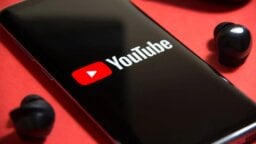
Is YouTube‘s Content ID the greatest gift on the internet for record labels, or a dysfunctional tool that does nowhere near enough to prevent copyright infringement?
That, friends, all depends on who you believe.
Google has today issued an update to a piece of work entitled ‘How Google Fights Piracy’, highlighting the efforts it feels it’s making to conquer online infringement.
These include ‘connecting fans to better legitimate alternatives’ to piracy sites, such as YouTube and Google Play. (Certain research would lead one to question if Google couldn’t do a lot more in this area…)
In addition, Google also speaks with pride that, with its search engine, ‘the vast majority of media-related queries that users submit every day return results that include only links to legitimate sites’.
In a blog post summing up the report, Katie Oyama, Senior Policy Counsel at Google, says that since 2012, Google has blacklisted more than 91,000 sites from its commercial network AdSense for violating its policies against copyright infringement.
The loudest chest-beating from Google, though, is reserved for Content ID, the tool with which rights-holders can track and then choose to block or monetise user-generated content which uses their music.
“YouTube alone… has now generated over $2 billion to rightsholders across industries through its industry-leading rights management system, Content ID,” says Oyama.
How much of that has made its way to the music business is unclear, but Google reiterates that YouTube has paid out $3bn to date to music rights-holders.
Crucially, Oyama claims: “Content ID is a highly effective solution and today, over 98% of copyright management on YouTube takes place through Content ID, with only 2% being handled through copyright removal notices.”
She adds: “In fact, today well over 90% of all Content ID claims across the platform result in monetization.
“The music industry chooses to monetize more than 95% of their claims, opting to leave the content up on the platform – half of the music industry’s YouTube revenue comes from fan content claimed via Content ID.
“Thanks to Content ID, YouTube is also the only platform that gives partners an automated way to directly monetize background/incidental use and covers.”

The record industry, whose main players are all expected to be out of licensing contracts with YouTube by the end of the summer, doesn’t agree.
The CEO of IFPI, Frances Moore (pictured), said in response to Google’s new report:
“Google has the capability and resources to do much more to tackle the vast amount of music that is being made available and accessed without permission on its platforms.
“Our member record companies’ experience demonstrates that Google’s Content ID tool is ineffective in preventing infringing content appearing on YouTube. Record companies and publishers estimate that Content ID fails to identify 20-40% of their recordings.
“Google’s search engine continues to direct internet users to unlicensed music on a large scale. Well over 300 million de-list notices have been sent to Google by IFPI national groups worldwide.
“Despite this, the amount of traffic to infringing sites from typical music search queries sent to Google is now higher than it was before Google changed its search algorithm to supposedly address levels of piracy.
“Google can, and must, do more to tackle these issues and return fair value to rights holders.”
So, to recap: Google says that Content ID is responsible for half the revenue from YouTube that goes to music rights-holders – which, according to estimates, hit $740m in total last year.
It also says that Content ID alone has generated $2bn for rights-holders across industries, including music.
Yet major music rights-holders say that Content ID is failing to identify around a third of their recordings on YouTube, which presumably then remain unmonetised.
The fun continues.Music Business Worldwide





